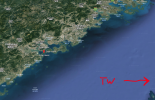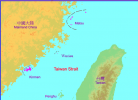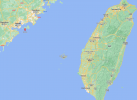Junakriisi: Luotijunat olivat tuottoisia kun ne operoivat täydessä kapasiteetissa. Mutta kun hinnat ovat sellaiset että junat jäävät 40% kapasiteettiin, niin tuokin kupla alkaa olla valmis hajoamaan. Eikä 0% covid politiikka auta asiaan, kun junat eivät liiku ollenkaan.

China drought causes Yangtze to dry up, sparking shortage of hydropower
Nationwide alert issued with south-west especially badly hit, as major companies forced to suspend workwww.theguardian.com
Tulvat, kuumuudet, covid, pankkikriisi. Mitä seuraavaksi?
Install the app
How to install the app on iOS
Follow along with the video below to see how to install our site as a web app on your home screen.
Note: This feature may not be available in some browsers.
You are using an out of date browser. It may not display this or other websites correctly.
You should upgrade or use an alternative browser.
You should upgrade or use an alternative browser.
Siirsin tänne Ukraina-ketjusta, kun aiheessa siirryttiin Tyynelle merelle USA:n asejärjestelmäkäytön suhteen. Alunperin viestiketjussa arvioitiin Ukrainan Himars / GMLRS asemäärien mahdollisuuksia ja tuolloisen viiteartikkelin mukaan arvelin USA:n muiden kuin Ukrainan alueiden konflikteihin varautumisen rajoittavan GMLRS toimitusmahdollisuuksia Ukrainaan mm. Kaukoidän tilanne ja Kiinan uhka mukaan lukien. Ohessa siihen tullut kommentti, erityisesti Tyynenmeren alueen suhteen.
Ylen A-studiossa ma 22.8.2022 oli lyhyt filmipätkä Taiwanille kuuluvan Kinmen-saaren tilanteesta. Sieltä on ~3 km manner-Kiinan puolelle Xiamenin suurkaupunkiin ja kiinalaiset ovat aikanaan ampuneet 1970-luvulle saakka tykeillä mantereelta saarelle. Kuorista ja sirpaleista taotaan edelleen veitsiä turisteille myytäväksi. Ohessa linkki ohjelmaan YLE Areenassa sekä pari kuvasieppausta. Taiwan osuus alkaa ohjelman kohdassa 25:55 ja saarivierailu on heti osuuden alussa:
https://areena.yle.fi/1-50949261

Arvelen noilla etäisyyksillä Himars / GMLRS asejärjestelmän olevan risteilyohjuksia näppärämmän laitteen paikallisen asevaikutusuhan luojana, jos sodan uhkaan saakka tilanne kiristyy. Siihen(-kin) lienee USA:n varauduttava ja varausmäärät huomioitava muiden konfliktien tilanteissa ja asetoimitusmahdollisuuksissa.
USA ei kuitenkaan ole minkään yhden asejärjestelmän orja, sitä paitsi GMLRS-rakettien käyttökelpoisuus Tyynellämerellä lienee paljon vähäisempi kuin Ukrainassa..
Onhan niillä taivaalta tiputettavaa murkulaa jos jonkinlaista, Tomahawk-risteilyohjuksia ja niin edelleen.
Ylen A-studiossa ma 22.8.2022 oli lyhyt filmipätkä Taiwanille kuuluvan Kinmen-saaren tilanteesta. Sieltä on ~3 km manner-Kiinan puolelle Xiamenin suurkaupunkiin ja kiinalaiset ovat aikanaan ampuneet 1970-luvulle saakka tykeillä mantereelta saarelle. Kuorista ja sirpaleista taotaan edelleen veitsiä turisteille myytäväksi. Ohessa linkki ohjelmaan YLE Areenassa sekä pari kuvasieppausta. Taiwan osuus alkaa ohjelman kohdassa 25:55 ja saarivierailu on heti osuuden alussa:
https://areena.yle.fi/1-50949261

Arvelen noilla etäisyyksillä Himars / GMLRS asejärjestelmän olevan risteilyohjuksia näppärämmän laitteen paikallisen asevaikutusuhan luojana, jos sodan uhkaan saakka tilanne kiristyy. Siihen(-kin) lienee USA:n varauduttava ja varausmäärät huomioitava muiden konfliktien tilanteissa ja asetoimitusmahdollisuuksissa.
Huawei CEO Ren Zhengfei has reportedly told staff that tough economic times represent a real threat to the company.
Reports in Chinese outlets Yucai and NetEase allege that Ren posted a missive on Huawei’s internal networks in which the CEO called for the company to prioritize cash flow and profit instead of growth and scale.
Ren’s reasoning is that the global economy is in for up to a decade of depressed demand, with very tough years expected from 2023 to 2025 – a period during which a focus on survival will be necessary.
He reportedly wrote he is uncertain whether Huawei can “break through” the 2023-2024 period.
The CEO blamed the combination of post-COVID economic complications, war, and US sanctions for his pessimism.
He therefore wants Huawei to halt complex projects that have high risk of failure, use the company’s own cloud to improve efficiencies, reduce R&D on items like electric cars, and abandon businesses that have little prospect of turning a profit.
Ren foreshadowed withdrawal from or downsizing in some overseas markets and repatriation of staff.
Customer service will be prioritized.
The company will also focus on IT infrastructure, a market Ren believes will continue to offer opportunities.

Huawei CEO reportedly puts company in survival mode
Ren Zhengfei warns tough economic times mean it’s time to focus on profit and quality
Jeps jeps... joku joka pääsee tuonne paikalle mittaamaan tarkasti eri mittoja pystyy kyllä laskemaan perspektiivin takaperin ja selvittämään melko tarkan kuvausetäisyyden. Se paljastaa sitten ainakin jotain kiinalaisen optiikan tasosta, jos ilmatilaloukkausta ei olekaan tapahtunut.
Ihan omana mielipiteenä tuossa ei tunnu kovin litistyneeltä syvyysvaikutelma, joten kuvausetäisyys ei olisi ollut valtavan pitkä. Mutta eikös tuo Kinmen ole melko lähellä mannerta ja rajaviiva siis lähellä rantaa myös?
arix
Respected Leader
Olikos se 3km Kiinasta?Jeps jeps... joku joka pääsee tuonne paikalle mittaamaan tarkasti eri mittoja pystyy kyllä laskemaan perspektiivin takaperin ja selvittämään melko tarkan kuvausetäisyyden. Se paljastaa sitten ainakin jotain kiinalaisen optiikan tasosta, jos ilmatilaloukkausta ei olekaan tapahtunut.
Ihan omana mielipiteenä tuossa ei tunnu kovin litistyneeltä syvyysvaikutelma, joten kuvausetäisyys ei olisi ollut valtavan pitkä. Mutta eikös tuo Kinmen ole melko lähellä mannerta ja rajaviiva siis lähellä rantaa myös?
Antares
Respected Leader
Kartalle toinen lähde missä selitetään mistä se on peräisin: LÄHDE
Suora linkki Google Maps -karttaan: LINKKI
As of today (24th), a total of 2,201 military facilities have been marked on the map, and they have been continuously updated. Recently, the focus has been on the improvement of the marking of PLA radar stations. About 100 new radar stations have been added in the past three days. In addition, my music master class is about to start (the upcoming new semester reminds myself that it is actually the music department XD. Due to the start of the school, the update speed will be slower in September, but I will still update it in my spare time to let everyone know.
Distinguishing skills of several PLA radar stations: All radar stations in coastal areas have radomes. For older radar stations, the radomes are often large-spotted camouflage; the more recent ones are striped camouflage. The white radome may be the air force radar, or it may be the civil aviation and weather radar, which can be distinguished by the presence or absence of private cars. The most direct way to distinguish the radar stations of the Navy and Air Force is to see whether there is a basketball court. Most naval radar stations have a basketball court, and there will be a half court if there is no full court.
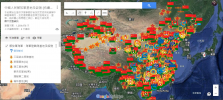
Suora linkki Google Maps -karttaan: LINKKI
As of today (24th), a total of 2,201 military facilities have been marked on the map, and they have been continuously updated. Recently, the focus has been on the improvement of the marking of PLA radar stations. About 100 new radar stations have been added in the past three days. In addition, my music master class is about to start (the upcoming new semester reminds myself that it is actually the music department XD. Due to the start of the school, the update speed will be slower in September, but I will still update it in my spare time to let everyone know.
Distinguishing skills of several PLA radar stations: All radar stations in coastal areas have radomes. For older radar stations, the radomes are often large-spotted camouflage; the more recent ones are striped camouflage. The white radome may be the air force radar, or it may be the civil aviation and weather radar, which can be distinguished by the presence or absence of private cars. The most direct way to distinguish the radar stations of the Navy and Air Force is to see whether there is a basketball court. Most naval radar stations have a basketball court, and there will be a half court if there is no full court.

Viimeksi muokattu:
A drought in China is threatening food production, prompting the government to order local authorities to take all available measures to ensure crops survive the hottest summer on record.
On Tuesday, four government departments issued an urgent joint emergency notice, warning that the autumn harvest was under “severe threat”. It urged local authorities to ensure “every unit of water … be used carefully”, and called for methods included staggered irrigation, the diversion of new water sources, and cloud seeding.
A record-breaking heatwave combined with a months-long drought during the usual flood season has wreaked havoc across China’s usually water-rich south. It has dried up parts of the Yangtze River and dozens of tributaries, drastically affecting hydropower capacity and causing rolling blackouts and power rationing as demand for electricity spikes. There is now concern about future food supply.
Even Pay, an analyst at Trivium China who specialises in agriculture, said her immediate concern was for fresh produce.
“The kinds of fresh vegetables that supply the local markets where people buy their produce each day – that’s the category that is least likely to be in a major irrigation area, and which is not likely to be strategically prioritised in a national push to protect grain and oil feeds,” she said.

China issues alert as drought and heatwave put crops at risk
Local authorities told to take measures and ‘use every unit of water carefully’ in effort to save autumn harvest
The Solomon Islands government has reportedly threatened to ban foreign journalists from entering the Pacific nation if they are not “respectful” or if they engage in “racial profiling” in stories about the country’s ties with China.
The office of the prime minister, Manasseh Sogavare, issued a statement on Wednesday saying that overseas journalists needed to understand they could not operate in the Pacific the same way they did in other countries, the ABC has reported.
“The Pacific is not the same as Australia or United States. When you chose to come to our Pacific Islands, be respectful, be courteous and accord the appropriate protocols,” the statement read.
The statement said journalists who did not appreciate the differences would “not be allowed to enter Solomon Islands and other Pacific Islands nations”.
The statement was particularly critical of the ABC’s reporting of China’s growing presence in Solomon Islands, accusing the Four Corners programme of engaging in racial stereotyping and the “intentional use of misinformation” in an episode from 1 August titled Pacific Capture: How Chinese money is buying the Solomons.
The ABC rejected those accusations in an earlier statement, saying it stood by the episode and that its main interview subjects were Solomon Islanders raising concerns about China’s presence.
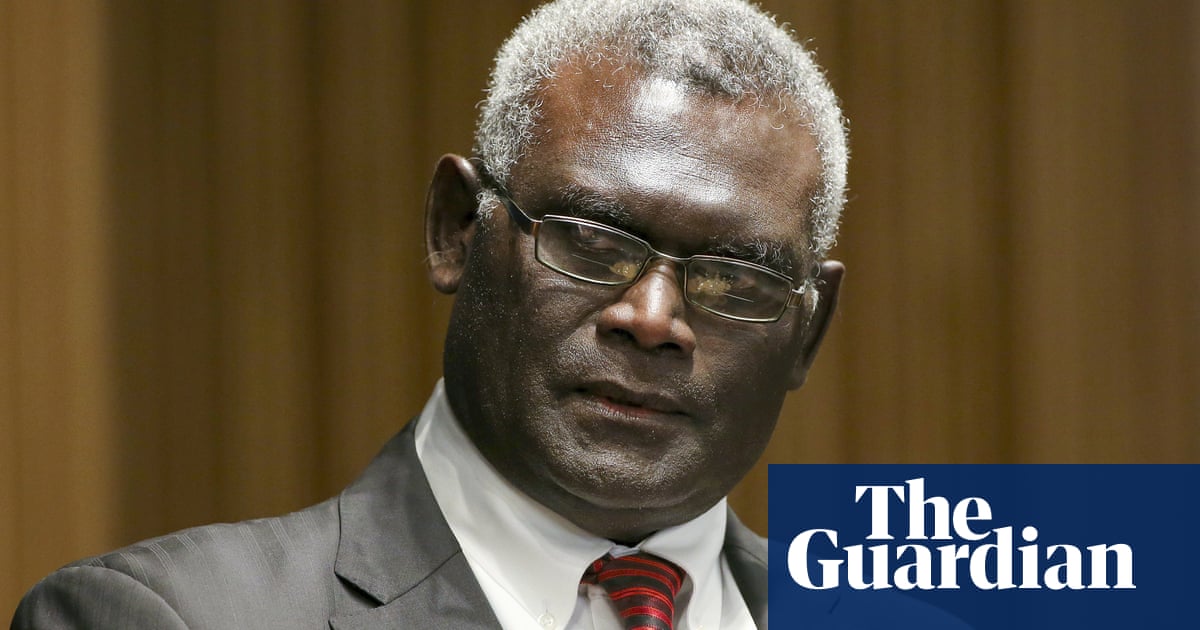
Solomon Islands to ban foreign journalists who are not ‘respectful’ – report
PM office says journalists cannot operate in the Pacific as they do in other countries, accusing Australia’s ABC of ‘racial profiling’ in China coverage
A United States coast guard vessel was unable to enter Solomon Islands for a routine port call because its government did not respond to a request to refuel and provision, a US official said.
The Solomons government did not immediately answer a Reuters request for comment. It has had a tense relationship with the US and its allies since striking a security pact with China in May.
The USCGC Oliver Henry was on patrol for illegal fishing in the South Pacific for a regional fisheries agency when it failed to obtain entry to refuel at Honiara, the Solomons’ capital, a US coast guard press officer said in an emailed statement.

US ship unable to get Solomon Islands’ permission to dock, says Washington
Honiara did not respond to request for coast guard vessel to refuel amid tensions over security pact with China
arix
Respected Leader
Tuolla tulee tapahtumaan vallankaappaus ja kiinalaisten karkoitus, sanotaan viiden vuoden sisällä viimeistään...
US ship unable to get Solomon Islands’ permission to dock, says Washington
Honiara did not respond to request for coast guard vessel to refuel amid tensions over security pact with Chinawww.theguardian.com

Rain across central China this week is expected to relieve the country’s worst heatwave on record, but weather agencies are now warning of potential floods, while analysts say the energy crisis exacerbated by the months-long drought is not over.
Almost half of China has been affected by the latest heatwave, the hottest since record-keeping began in 1961. Hundreds of temperature records have been broken, and the heat has exacerbated the effects of low rainfall, drying up rivers and reservoirs across the country.
Light to moderate showers have moved into central and southern China, and were expected to intensify this week, according to China’s meteorological agencies (CMA). It said moderate to heavy falls were expected from southern Gansu down to Yunnan and across the drought-stricken Sichuan basin, bringing a risk of flash floods. In Sichuan on Monday more than 110,000 people in Sichuan had been relocated to safer areas.

Rain eases China’s record heatwave but fresh energy crisis looms
Weather agencies warn of flooding as analyst warns a winter energy crunch is ‘highly likely’
Taas tulvia (flash flood). Kiina myös suorittaa järkyttäviä väestön pakkosiirtoja. Ilmastonmuutos kriisi on ollut heille rankka. Onhan he ykkös saastuttaja, joten ykkös uhri ei ole kaukana siitä. Tämän päälle ne kaikki muut kriisit. Tuntuu että Kiina natisee liitoksissaan omassa mahdottomuudessaan.
The heat, combined with power and water shortages, had a debilitating impact on regional and farming areas, and on vulnerable groups including elderly people and those working outdoors.
Andrew Polk, an analyst with Trivium China, said the demand for electricity had overwhelmed provincial power grids, and warned it was “highly likely” the coming winter would see another regional power crunch.
Polk said the lack of water in the Yangtze river and dozens of tributaries, during what is supposed to be the wet season, had severely affected power supply in Sichuan – which draws 80% of its electricity from hydropower – and downstream regions.
Cooler temperatures would lower household demand for electricity and ease rationing of commercial and industrial power, but it was only temporary.
“Officials have had to uncork reservoirs to avert agricultural, river transport and ecological disasters,” he said.
“Chances are high that Sichuan will again run low on hydropower by year end – even if the heatwave ends immediately … Sichuan is now at such a water deficit that it would take a meteorological miracle to reach anything approaching normal levels for winter power production.”
A Chinese thinktank has issued a rare public disagreement with the ruling Communist party’s severe “zero-Covid” policy, saying curbs that shut down cities and disrupt trade, travel and industry must change to prevent an “economic stall”.
The Anbound Research Center gave no details of possible changes but said on Monday that Xi Jinping’s government needed to focus on shoring up sinking growth. It noted the US, Europe and Japan were recovering economically after easing anti-disease curbs.
“Preventing the risk of economic stall should be the priority task,” the thinktank said in a report titled: It’s Time for China to Adjust Its Virus Control and Prevention Policies.

Chinese thinktank makes rare public call for Beijing to ease zero-Covid policy
In report since taken off social media, Anbound Research Center said preventing ‘economic stall’ should take priority over virus elimination

Economists warn that China needs to boost growth that sank to 2.5% over a year earlier in the first half of 2022, less than half the official annual target of 5.5%, after Shanghai and other industrial centres shut down starting in late March to fight virus outbreaks.
“China’s economy is at risk of stalling” due to the “impact of epidemic prevention and control policies”, the thinktank said.
The economy is also under pressure from a plunge in real estate activity after Beijing tightened controls on the industry’s use of debt.
Economists and public health experts have warned since mid-2021 that zero Covid, which aims to keep the virus out of China by isolating every case, is unsustainable. Officials respond that they have no alternative because letting the virus spread would overwhelm Chinese hospitals.
China’s policy has kept deaths and infection numbers low but led to a wave of business failures.
News reports say local governments are cutting public services and wages for civil servants to pay for virus testing and anti-disease measures.
Travel curbs in China keep out most foreign visitors. The government has stopped replacing passports that expire and has called on the public to avoid going abroad.
rty19
Greatest Leader
arix
Respected Leader
Nuo ovat Taiwanin hallinnoimia alueita...Varmaan virhe paikan nimessä? (lost in translation?)
En usko että tuonne olisi taiwan ampunut.
Katso liite: 66269

